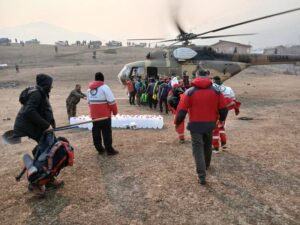Avash News: Pezeshkian wrote on his account on the social media platform X on Friday: “From the heart of the desert to the slopes of the Alborz Mountains and the turquoise shores of the Persian Gulf, the three villages of Shafiabad in Kerman, Kandolus in Mazandaran, and Soheili in Qeshm have once again made the name of Iran shine on the global tourism map. Iran, the land of bravery and art, that holds a great destiny in its embrace. For Iran — for a global Iran — for a great Iran.”
the Evaluation Committee of the United Nations World Tourism Organization (UNWTO) for the Best Tourism Villages announced on Friday, during its fifth meeting to select the World’s Best Tourism Villages, that Kandolus Village has been officially registered as one of the world’s top tourism villages.
The official ceremony for announcing the Best Tourism Villages of 2025 was held in Huzhou City, Zhejiang Province, China. The evaluation results of the nominated villages were announced, and Kandolus Village from Mazandaran Province was among the selected destinations.
Over the past three decades, Kandolus has gained international recognition for its unique and beautiful ethnographic museum, its valuable and well-preserved rural architecture, pristine natural environment, rich cultural and historical background, and vibrant local social fabric. These features led the Ministry of Cultural Heritage, Tourism, and Handicrafts of the Islamic Republic of Iran to nominate Kandolus for inclusion in the UNWTO’s list of Best Tourism Villages.
In addition to the efforts made over the past thirty years by the villagers and cultural activists to preserve Kandolus’s rural heritage, the Mazandaran Department of Cultural Heritage, Tourism, and Handicrafts has, over the past year, carried out various initiatives to support the village’s global registration. These include defining and launching a literary tourism route based on the local folk tale “Mina and the Leopard”, designing and unveiling a doll inspired by the same story, organizing tourism and tour-guiding workshops for local guides, and implementing several other cultural and digital projects.
As one of Iran’s first model tourism villages, Kandolus began attracting serious tourist attention in the 1990s following the establishment of the Kandolus Historical and Museum Complex. Infrastructure development projects — such as expanding the cultivation of medicinal plants and restoring the village’s layout based on traditional architecture — initiated by Dr. Ali-Asghar Jahangiri, a native of the village, further enhanced its appeal. Over time, through various cultural, traditional, and infrastructural efforts to preserve its authenticity, Kandolus has evolved into an independent destination for historical, natural, and cultural tourism in western Mazandaran.







